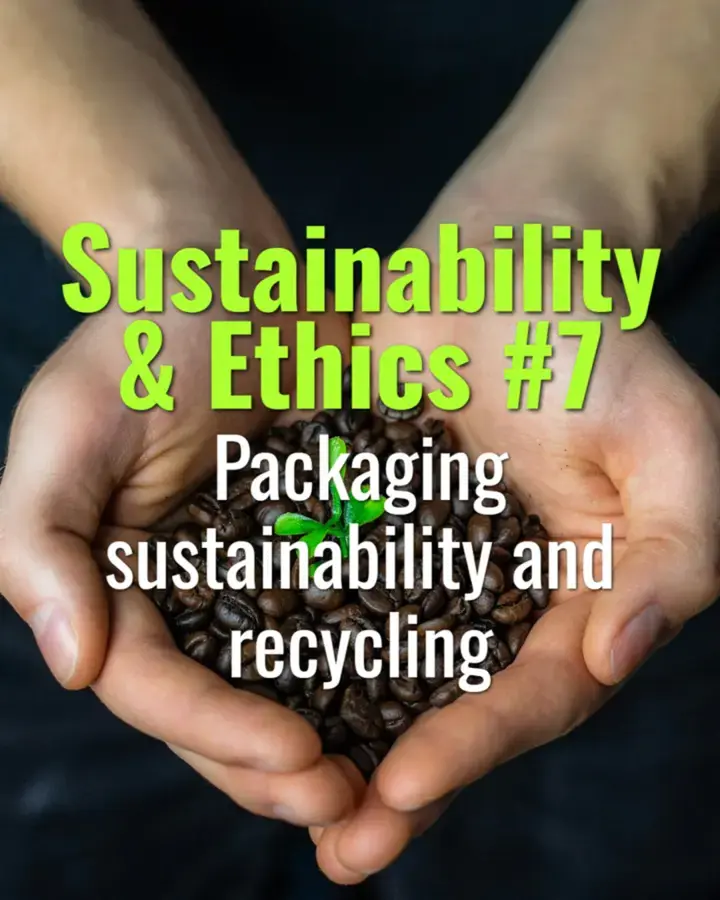Packaging sustainability and recycling
The environmental impact of coffee packaging, challenges with recycling, and innovations that aim to make packaging more sustainable.
- Coffee Basics Nerds
- 2 min read
Article 7 of 12 in Sustainability & Ethics/

Packaging in the Coffee Chain
- Green Coffee: Transported in jute bags, often with plastic liners (GrainPro, Ecotact) for freshness.
- Roasted Coffee: Commonly packaged in multilayer foil or plastic bags with degassing valves.
- Single-Serve Formats: Pods, capsules, sachets, and takeaway cups pose major sustainability challenges.
Environmental Challenges
- Multilayer Films: Difficult to recycle due to mixed plastic/metal layers.
- Single-Use Waste: Billions of pods, sachets, and cups discarded annually.
- Carbon Footprint: Packaging contributes significantly to emissions in the coffee lifecycle.
Sustainable Alternatives
- Mono-Material Bags: Easier to recycle in standard plastic streams.
- Compostable Packaging: Made from PLA, cellulose, or bioplastics—though composting infrastructure may be limited.
- Reusable Containers: Bulk bins, refill stations, and returnable jars.
- Recyclable Aluminum Capsules: Closed-loop systems (e.g., Nespresso capsule recycling).
Recycling Barriers
- Infrastructure varies by country/region.
- Consumer confusion about disposal instructions.
- Lack of incentives for proper collection and sorting.
Industry Innovations
- Brands experimenting with paper-based bags and carbon-neutral packaging.
- Specialty roasters providing clear disposal guidance on packaging.
- Circular economy initiatives: capsule return schemes, deposit systems.
Consumer Role
- Choosing roasters with transparent packaging policies.
- Supporting refillable and reusable options.
- Properly separating recyclables and compostables.
Summary
Coffee packaging poses sustainability challenges due to multilayer plastics, single-use waste, and recycling barriers. Solutions include mono-material designs, compostable materials, reusable systems, and clearer recycling guidance—all aimed at reducing the industry’s environmental footprint.